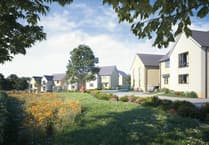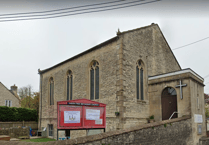In the 1930s, life in Radstock was a far cry from what it is today. Radstock was at the virtual heart of the Somerset coal fields, with several collieries in or near the town centre. The town’s prosperity was founded on winning the ‘black gold’, profitable for the owners, but for the miners themselves, it was a very hard life.
Clutton History Group’s speaker for the January meeting was Dennis Chedgy, from Radstock Museum, who related a fascinating story of a ‘Miner’s daughter growing up in Radstock in the 1930s’. The story was taken from an article written by Audrey McInnies, which appeared in the Museum’s magazine, Five Arches.
Audrey’s father, who left school at fourteen, was a miner at Ludlow’s Colliery and they lived in one of the rented cottages at 29 Waterloo Road, where most of the residents were miners and their families. Rents were taken directly from the miner’s wages.
Although the house was small, it provided warmth and shelter, but had no
running water inside. This had to be collected from an outside tap, and waste water carried out and disposed of in the drains. The toilets and communal washhouse were also outside at the end of the rank of houses, and Audrey told how scary it was for a child to visit the toilet in the dark, with only a candle for light.
The only source of heating and cooking was from a coal fired black lead cooking range using Audrey’s father’s concessionary coal, which was part of his wages.
When her father came home from the pit, every utensil was used to heat water for his bath, the bath being a rather small, galvanised one that was kept on a hook on the house wall outside. Bathing had to be done in stages, and there was little privacy, other than a cloth draped over the
family clothes horse. She reports that when the pit head baths were installed, it was a great improvement, as the miners could go to work in decent clothes, giving them all a better sense of well-being.
To avoid storing coal in the house, Audrey’s father built a coal shed in the small front garden, as did many of his neighbours. At the back of the house, there was a long garden stretching up the hill to Waldegrave Terrace, where Audrey’s father grew vegetables to supplement the family’s food supply. He also had an allotment about a mile away at Ham, where he kept chickens and later on in the war years, rabbits, to
supplement the meat ration. Waterloo Road was, at the time, quite narrow, and opposite the front of Audrey’s house was a six foot high wall, behind which was the Somerset and Dorset Joint Railway and nearby station.
There was a shunting yard where the trucks of coal from Ludlow’s and Writhlington pits were assembled, ready for distribution on the main line. As Audrey said, the area was inevitably noisy and dirty, but everyone got used to it.
Both goods and passenger trains worked the line, most notably, the Pines Express that worked between Manchester and Bournemouth. The Pines Express was said to be so punctual that people set their clocks by it. During the war, troop trains were seen and Audrey recalls that as children, they were always excited whenever a train of American soldiers was held up at a signal opposite their homes and they would be the recipients of chewing gum and ‘candies’ thrown by the soldiers.
Wash day was an event and the ladies had a strict rota of when to do their washing. It was a sense of pride for them to hang beautifully clean white sheets on the line after the hard work of washing them with hard soap on a washing board. The following day meant ironing, where the irons were heated on a rack attached to the fire bars of the grate. Later on, the houses were supplied with gas lights and a gas ring, the gas being paid for by a coin-in-the-slot meter.
Some time later, the tenants were offered three electric lights and one power point, which meant eventually that Audrey’s mother acquired an electric iron
operated from a light socket with an adaptor.
Saturdays were special days when the Market Hall (now the Radstock Museum) was very busy, with all sorts of goods on offer and outside the hall there were various stalls as well.
The town was well served by various traders, most notably the Co-operative
Society. There was a Co-op bakery in the town who delivered bread on a daily basis all around the area, as was the milk. They also delivered meat, oil and hardware.
Audrey attended the local school and then went to Grammar school before
attending Nottingham University for her degree. It was here that she met her husband, who was a mining engineer, so the coal industry has always been a part of her life.
A wonderful story and very well told by Mr Chedgy, who added his own amusing anecdotes which were greatly appeciated.
Clutton History Group’s next meeting in the village hall will be on Tuesday, 14th February at 8 p.m., when we welcome back William Evans, who will be giving
a digital presentation on ‘Bishop Monk and the Horfield Question’.
Visitors are always very welcome. For further information, please telephone: 01761 471533.



